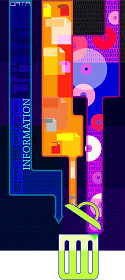Truly, it is easier to find out the average cost of a meal or nail polish (found them both in one try) than it is to find out most statistics on book sales (try Googling “average number of books sold per title” in any iteration and you’ll see what I mean).
I could find that the median writer/author salary was $55,420 per year in 2010, but let’s remember what ‘median’ means.
In a world where with the touch of few button we can find out the coffee drinking habits of the world, why did I spend hours looking for the few stats I could tease out about publishing? (Are there not enough computers for publishers? Do we need a kickstarter campaign to help get these numbers in one place?)
As a lover of the make-believe, this was not my favorite pursuit (oh, that I could have assigned this job to my fact-loving husband) but knowledge is power, so consider this part one of: Just The Stat Facts, Mam.
Caveat Emptor: What you have below is the work of a curious mind, but not an expert-in-the-field. Corrections welcome!
BOOK SALES IN 2013:
Which means (even to a non-math person like me) paper books have 80% of the market)
Publishers Weekly, with numbers gleaned from BookStats, the Association of American Publishers/Book Industry Study Group, reported: “Sales of hardcovers rose 1.3% in the year, to $5.06 billion, and trade paperback sales increased slightly, up 0.4%, to $4.96 billion. . . . Total e-book sales rose 44.2% in 2012, to $3.04 billion and accounted for 20% of trade revenue”
PW expected a drop in mass-market paperback sales, while “sales of downloadable audio rose 21.8% in 2012, to $240.7 million,” but there was no data on the performance of physical audio.
Self-publishing has tripled in five years: “The number of self-published books produced annually in the U.S. has nearly tripled, growing 287 percent since 2006, and now tallies more than 235,000 print and “e” titles, according to a new analysis of data from Bowker® Books In Print and Bowker® Identifier Services.”
Traditionally published books rose six percent: The number of traditionally published print books rose 6% in 2011, to 347,178, according to preliminary figures released by Bowker.
How many copies do most self-published books sell and what does it cost to self-publish?
According to the New York Times (last August–click link above for article) “most self-published books sell fewer than 100 or 150 copies, many authors and self-publishing company executives say. There are breakout successes, to be sure, and some writers can make money simply by selling their e-books at low prices. Some self-published books attract so much attention that a traditional publishing house eventually picks them up. (Perhaps you’ve heard of the novel “Fifty Shades of Grey,” which began its life as a self-published work?)
Still, a huge majority of self-published books “don’t sell a lot of copies,” said Mark Coker, the founder and chief executive of Smashwords, a no-frills operation that concentrates on self-published e-books. “We make it clear to our authors.”
Finding the number of books, by average, that books published by traditional houses sell seemed close to impossible (but I will keep looking for part 2). The closest stats I could find for average book sales was this: According to BookScan, which tracks most bookstore, online, and other retail sales of books, only 299 million books were sold in 2008 in the U.S. in all adult nonfiction categories combined. The average U.S. book is now selling less than 250 copies per year and less than 3,000 copies over its lifetime.
The above did not differentiate eBooks, so this average is truly unclear, but it is a beginning. Before this, I always heard the average title sales (which I take to include all versions) were usually 5,000. But, that is only word of mouth.
Books Published Per Year by Country (according to UNESCO)
Top 15 Countries:
United States (2010) 328,259 (new titles and editions)
United Kingdom (2005) 206,000
China (2010) 189,295 (328,387 total)
Russian Federation (2008) 123,336
Germany (2009) 93,124
Spain (2008) 86,300
India (2004) 82,537 (21,370 in Hindi and 18,752 in English)
Japan (2009) 78,555
Iran (2010) 65,000
France (2010) 63,690 (67,278 total)
South Korea (2011) 44,036
Taiwan (2010) 43,309
Turkey (2011) 43,100
Netherlands (1993) 34,067
Italy (2005) 33,641 (59,743 total)
Click on the hyperlink above for the whole wide world. Very interesting.
IN THE WORLD OF MAGAZINES:
“In the fall, celebrity title sales usually dip, while titles in the Food, Health and Automotive categories spike during the 4th quarter,” and November is the slowest month for magazine purchases on newsstands.
HOW MANY BOOKSTORES? WHERE ARE THEY?
According to Open Education Database in October 2012, and other sources highlighted below:
The Amazon online bookstore had about 22.6 percent of book sales.
The number of bookstores decreased from 2,400 to 1,900.
Book sales were strongest in Los Angeles, New York, Chicago, Boston, Washington DC, Philadelphia, San Francisco, Seattle, San Jose, and San Diego.
Cities with the most bookstores are Seattle, followed closely by San Francisco, Cincinnati, Minneapolis, and St. Louis.
There were about 10,200 bookstores in the United States in 2011. Since the numbers below do not add up to anywhere near that number, I can only assume that Open Education Database includes booksellers such as Target, Costco and other big box stores.
Independent books stores were operated in 1900 locations (by 1567 owners) in 2012, according to the American Booksellers Association.
The Barnes and Noble chain has 1363 stores (689 retail stores, and 674 college stores) and are planning to close 20 a year during the next decade.
Books a Million have 250 stores.
Hudson Booksellers has 59 retail outlets.
HOW DO YOU COMPARE TO A CELEBRITY WRITER’S SALES?
Writer’s Digest provides a wrap-up. The high number on the list comes from Tina Fey, at 921,856 copies. The low comes courtesy of Paris Hilton’s children’s book, at 2,855 copies.
(figures as of mid-2013)
